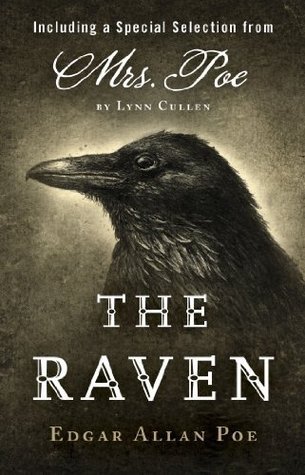THE RAVEN
by“The Raven” begins on a cold, shadowy midnight where the narrator, worn down by sorrow, seeks distraction in books of forgotten lore. The silence is pierced by a faint tapping, which stirs his grief-stricken nerves. Hoping it might be a visitor or some trivial noise, he opens the door into darkness, calling out to Lenore, his lost love, whose name brings only an echo. The emptiness seems to mock him, yet his yearning compels him to listen closer, drawn deeper into the night’s mystery. When the tapping shifts to his window, his apprehension sharpens, and with trembling hands, he flings it open to reveal a Raven—dark, poised, and regal. The bird enters uninvited, choosing to perch above his chamber door atop a bust of Pallas Athena, its gaze steady, as if bearing unspoken knowledge.
This seemingly ordinary bird begins to unravel the narrator’s fragile state of mind. Its reply to his first inquiry—“Nevermore”—is delivered without emotion, yet it strikes with unnerving finality. What begins as curiosity quickly spirals into obsession as he peppers the bird with questions, trying to wrest hidden meaning from its one-word vocabulary. The Raven’s presence, though still, seems to animate the room with an oppressive weight, turning each “Nevermore” into a verdict, not a phrase. The narrator’s grief fuses with madness, and the Raven becomes more than a bird—it transforms into a symbol, a spectral mirror of the narrator’s internal torment. With every question met by the same haunting word, he descends further, clinging to the hope that the bird might bring relief or truth. Instead, the repetition only confirms the permanence of his sorrow.
In his desperation, the narrator implores the Raven to tell him whether he shall be reunited with Lenore in the afterlife. The bird’s reply—again “Nevermore”—crushes the last remnant of hope in his heart. He imagines incense filling the room, as though from a censer swung by invisible angels, trying to lull him from his suffering, yet the sensation only magnifies the surreal tension of the moment. The room becomes stifling, his thoughts spiraling out of control. The Raven does not move, nor does it change its expression, but its silence between words becomes as oppressive as the word itself. Though it speaks only once each time, the power of its utterance multiplies in the narrator’s mind, making him question whether the bird is a messenger of fate or simply a reflection of his grief.
With each passing moment, the narrator becomes less tethered to reason. He cries out for the Raven to leave, to take its dark prophecy with it, but the creature remains unmoved, still perched on the bust, still staring. He sees in the Raven the embodiment of his grief—permanent, weighty, and inescapable. The chamber, once his sanctuary for learning and contemplation, transforms into a prison where the past cannot be forgotten. The bird’s shadow stretches across the floor, and he perceives it as a symbol of his soul, now trapped beneath the crushing weight of loss and finality. The sorrow is no longer just emotional—it becomes spatial, seeping into the room’s air, the light, and the silence. Every moment from here on is colored by the presence of the Raven, which will not depart.
Poe uses this haunting encounter to illustrate the torment of unresolved mourning. The Raven never changes, but the narrator’s interpretation shifts as he projects his desperation onto the creature. It is this projection that fuels the horror—not the bird itself, but what it comes to represent. In a way, the Raven becomes the mouthpiece of fate, speaking a truth the narrator is unwilling to face. His descent into madness is not caused by the bird, but by his refusal to let go of what he cannot change. The final image—of the Raven’s shadow lingering like a shroud—concludes the poem with a chilling silence that speaks more than words. In this darkness, the reader is left to reflect not only on death, but on the human mind’s power to trap itself in sorrow.
The enduring power of Poe’s tale lies in its universal theme: grief that cannot be reasoned with or soothed. The Raven speaks the truth of finality, but the horror comes from the narrator’s inability to accept it. His tragedy is not just the loss of Lenore, but his refusal to live beyond it. Poe offers no redemption, no hope, only the bleak echo of a word that binds the past to the present. Through this simple refrain, he delivers one of literature’s most poignant portrayals of mourning turned madness. The Raven, perched and still, remains as both a reminder and a curse—the final word in a life that has lost all other meaning.

